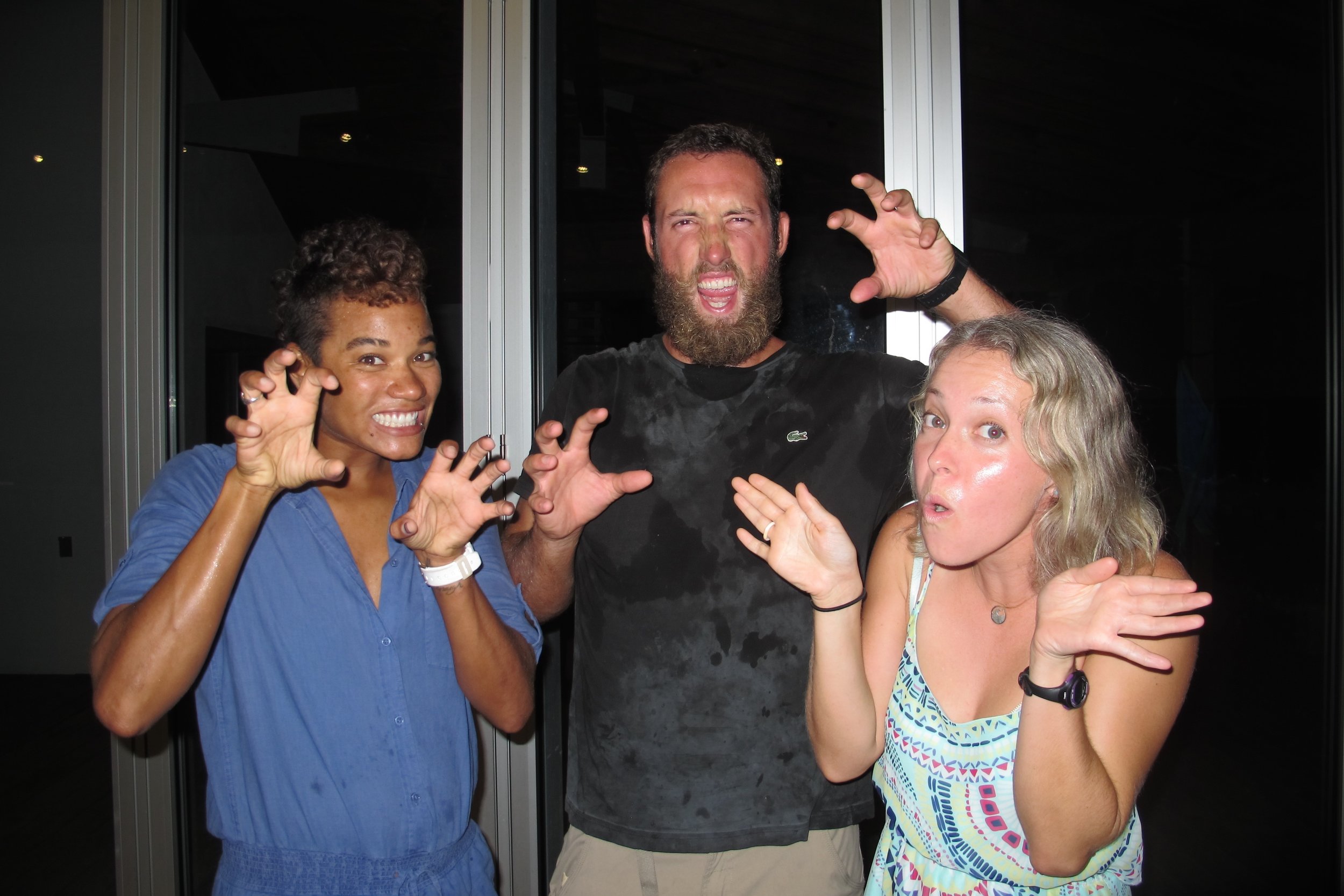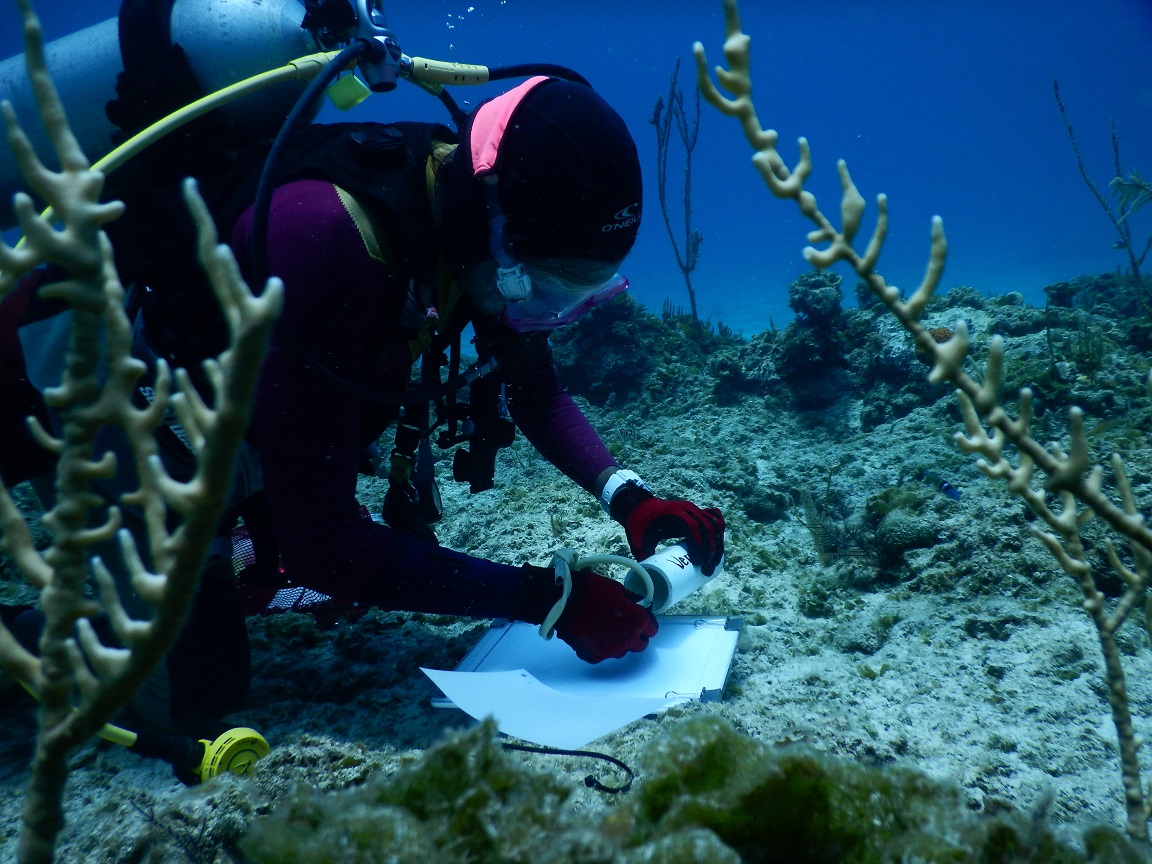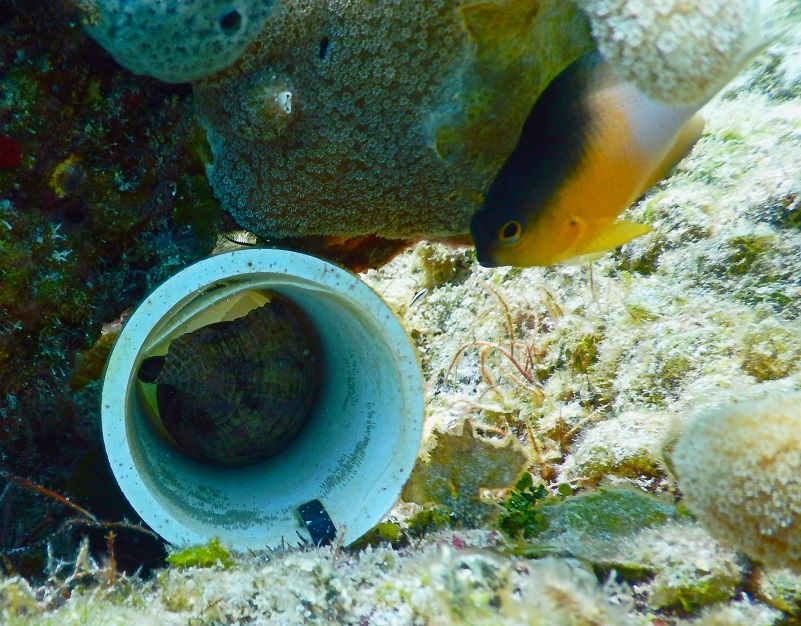Dr. Mark Hixon’s PhD students from Oregon State University returned to CEI for a fourth summer of invasive lionfish research.
As part of a long-term project, PhD student Alex Davis, and her field assistant, Kristian Dzilenski (from the University of Rhode Island), observed the home ranges of lionfish on large reefs in order to understand whether different types of habitat affect whether lionfish frequent certain areas of a reef and/or leave a reef altogether. In addition to this continued monitoring, she added an observational and experimental study on the bicolor damselfish (Stegastes partitus) and their interaction with lionfish.
This study was comprised of three components. First, she mapped the location of and tracked growth and abundance of bicolor damselfish on the same large reefs where she monitored lionfish movement. Second, she placed small PVC tubes with tracing paper inside of them called “Tunnels of Love” (TOLs) on the reefs, which allowed her to monitor egg production of the damselfish and determine if proximity to lionfish influences egg production. Third, she conducted a “model bottle” study to see if lionfish affect damselfish behavior. Each damselfish was exposed to an invasive lionfish in a clear plastic bottle, an empty bottle (for control), and a native predator, egg predator, and food competitor, each also in a bottle. The behavior of the damselfish was recorded, and a comparison of how the damselfish react to the lionfish versus the native fish and empty bottle will help us understand if damselfish see lionfish as a potential threat.
Lillian Tuttle is another PhD student from OSU, who visited CEI for 5 weeks this summer. Last summer she discovered that invasive lionfish will eat cleaner gobies, small but ecologically important reef fish that pick parasites off of other fishes. But when lionfish eat cleaners, the lionfish hyperventilates as if it ate something super spicy! She conducted a lab experiment that discovered that lionfish quickly learn to avoid the cleaner goby, meaning that this goby is one of remarkably few native fish that lionfish WON’T eat! But what about native predators? Must they also learn not to eat the cleaner goby, or are they born with an innate understanding that cleaners are friends, not food? Lillian returned to the lab and found that native graysby grouper will eat the cleaner goby and hyperventilate, just like the lionfish. But graysby are slower learners than lionfish, continuing to strike during subsequent exposures to the goby. With these kinds of friends, who needs enemies? It’s no wonder the goby has evolved a defense to makes them distasteful! Now Lillian is collaborating with chemical ecologists to identify the toxin that makes her gobies “spicy,” and she plans to defend her PhD in June 2016.
We wish the both Alex and Lillian a fond farewell and the best of luck with their Ph.D. write ups!

